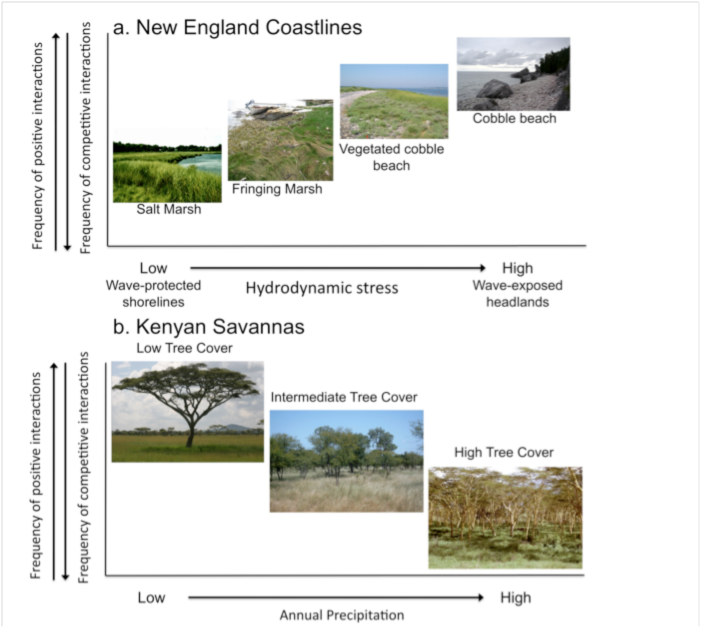|
Bertness Lab |  |
| Coastal Ecology and Conservation at Brown University |
| Overview |
| Consumer control |
| Human impacts |
| Foundation species |
| Climate change impacts |
| Historical ecology |
| Mark Bertness |
| Lab Alumni |
The role of foundation species and positive interactions in community organization A long-term goal of research in the Bertness lab has been to incorporate the important role that positive interactions and foundation species play in community structure and organization into the mindset of community ecologists and conservation biologists. We have proposed the stress gradient hypothesis (SGH) of community organization that hypothesized that importance of positive interactions and foundation species that provide net positive effects on their neighbors increase in physically stressful habitats due to the amelioration of physical stress and also increase in physically benign habitats where consumer pressure is intense due to associational defenses. The stress gradient hypothesis has been tested in a range of terrestrial and marine communities and been widely supported as a general organizing principle or rule of thumb of community organization. Most recently we have done research to incorporate the role of positive interactions and foundation species into conservation and management of coastal ecosystems. The importance of positive interactions in shaping communities across landscape spatial scales (from Holdredge et al BioScience in press). References |
